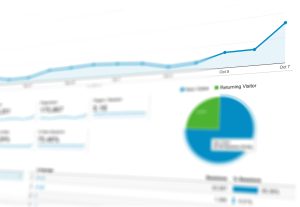In the modern, competitive business landscape, data-driven insights have become crucial for organizations seeking a competitive advantage. These insights involve utilizing data and analytics to extract valuable information and identify trends that inform business decisions. By harnessing data, companies can gain a comprehensive understanding of their customers, market dynamics, and internal processes, enabling them to make strategic choices that foster growth and success.
Data-driven insights empower organizations to make more accurate predictions and forecasts, leading to improved decision-making and enhanced performance. Through data analysis, businesses can uncover patterns and trends that may not be immediately apparent, allowing for proactive rather than reactive decision-making. This approach can result in cost reductions, increased efficiency, and overall improved performance.
Moreover, data-driven insights can help organizations identify new growth opportunities and innovative solutions, enabling them to maintain a competitive edge and adapt to evolving market conditions. Additionally, data-driven insights can enhance customer experience by providing a deeper understanding of consumer behavior and preferences. By analyzing customer data, organizations can tailor their products and services to better meet the needs of their target audience, resulting in increased customer satisfaction and loyalty.
In summary, data-driven insights are essential for organizations aiming to remain competitive in today’s data-centric business environment.
Key Takeaways
- Data-driven insights are crucial for making informed decisions and driving business growth.
- Leveraging data can help improve performance metrics such as sales, customer satisfaction, and operational efficiency.
- Implementing data-driven strategies across the organization can lead to better decision-making and improved overall performance.
- Key metrics to track for performance improvement include conversion rates, customer retention, and cost per acquisition.
- Data can be used to identify areas for improvement, such as product quality, customer service, and marketing effectiveness.
- Data analysis plays a critical role in evaluating performance and identifying areas for improvement.
- Measuring success through data-driven insights allows for a more accurate and objective assessment of business performance.
Leveraging Data to Improve Performance Metrics
Unlocking Valuable Insights
By analyzing data related to sales, marketing, operations, and finance, organizations can gain valuable insights into their performance and identify areas for improvement. For example, by analyzing sales data, organizations can identify which products are performing well and which ones are underperforming, allowing them to make strategic decisions about product development and marketing strategies.
Optimizing Processes and Reducing Costs
Similarly, by analyzing operational data, organizations can identify inefficiencies and bottlenecks in their processes, allowing them to make improvements that lead to cost savings and increased productivity. By leveraging data to improve performance metrics, organizations can set clear goals and benchmarks for success, allowing them to track their progress over time and make adjustments as needed.
Measuring Return on Investment
In addition, by leveraging data to improve performance metrics, organizations can also gain a better understanding of their return on investment (ROI) for various initiatives. By tracking key performance indicators (KPIs) related to marketing campaigns, product launches, and operational improvements, organizations can gain valuable insights into which initiatives are driving the most value for the organization. This allows them to allocate resources more effectively and make strategic decisions about where to focus their efforts for maximum impact.
Implementing Data-Driven Strategies Across the Organization
Implementing data-driven strategies across the organization is essential for leveraging the full potential of data-driven insights. This involves creating a culture of data-driven decision-making and ensuring that all departments and employees have access to the data and tools they need to make informed decisions. By implementing data-driven strategies, organizations can ensure that they are making decisions based on evidence rather than intuition, leading to more accurate predictions and better outcomes.
One way to implement data-driven strategies across the organization is to invest in data analytics tools and training for employees. By providing employees with the skills and tools they need to analyze data effectively, organizations can empower them to make informed decisions that drive performance and success. Additionally, organizations can create processes and systems for collecting, storing, and analyzing data in a consistent and reliable manner, ensuring that all decisions are based on accurate and up-to-date information.
Furthermore, implementing data-driven strategies also involves creating clear goals and benchmarks for success that are based on data and analytics. By setting clear targets for performance metrics and KPIs, organizations can ensure that they are tracking the right metrics and making decisions that align with their overall strategic objectives. This can lead to improved performance across the organization and a more focused and effective approach to decision-making.
Key Metrics to Track for Performance Improvement
When it comes to tracking performance improvement, there are several key metrics that organizations should focus on. These metrics can provide valuable insights into the overall health of the organization and help identify areas for improvement. One key metric to track is customer acquisition cost (CAC), which measures the cost of acquiring a new customer.
By tracking CAC, organizations can gain insights into the effectiveness of their marketing and sales efforts and identify opportunities to reduce costs and improve efficiency. Another important metric to track is customer lifetime value (CLV), which measures the total value a customer brings to the organization over the course of their relationship. By tracking CLV, organizations can gain insights into customer loyalty and identify opportunities to increase customer retention and lifetime value.
Additionally, organizations should track key performance indicators (KPIs) related to sales, marketing, operations, and finance in order to gain a comprehensive understanding of their overall performance. Furthermore, organizations should also track metrics related to employee performance and satisfaction in order to ensure that they are maximizing the potential of their workforce. By tracking metrics such as employee engagement, turnover rate, and productivity, organizations can gain insights into the effectiveness of their human resources strategies and identify opportunities for improvement.
Overall, by tracking these key metrics, organizations can gain valuable insights into their performance and make informed decisions that drive success.
Using Data to Identify Areas for Improvement
Data can be a powerful tool for identifying areas for improvement within an organization. By analyzing data related to sales, marketing, operations, finance, and customer feedback, organizations can gain valuable insights into areas where they may be underperforming or facing challenges. For example, by analyzing sales data, organizations may identify products or regions that are underperforming, leading them to make strategic decisions about product development or market expansion.
Similarly, by analyzing customer feedback and satisfaction data, organizations can identify areas where they may be falling short in terms of customer experience or service quality. This can lead to targeted improvements that drive customer satisfaction and loyalty. Additionally, by analyzing operational data, organizations can identify inefficiencies or bottlenecks in their processes that may be hindering productivity or driving up costs.
By using data to identify areas for improvement, organizations can take a proactive approach to addressing challenges and making strategic improvements. This can lead to cost savings, increased efficiency, and improved overall performance. Additionally, by identifying areas for improvement through data analysis, organizations can ensure that they are focusing their efforts on the most impactful initiatives that will drive success.
The Role of Data Analysis in Performance Evaluation
Measuring Return on Investment
Data analysis contributes to performance evaluation by providing organizations with a clear picture of their return on investment (ROI) for various initiatives. By tracking key performance indicators (KPIs) related to marketing campaigns, product launches, and operational improvements, organizations can gain insights into which initiatives are driving the most value for the organization. This allows them to allocate resources more effectively and make strategic decisions about where to focus their efforts.
Identifying Trends and Patterns
Data analysis also plays a critical role in identifying trends and patterns that may not be immediately apparent. By analyzing historical data and trends, organizations can gain insights into market conditions, customer behavior, and internal operations that may impact their performance. This allows them to make proactive decisions rather than reactive ones, leading to improved overall performance.
Driving Informed Decision-Making
Ultimately, data analysis enables organizations to make informed decisions about their operations, driving improved performance and competitiveness. By leveraging data insights, organizations can optimize their strategies, allocate resources more effectively, and achieve their goals more efficiently.
Measuring Success Through Data-Driven Insights
Measuring success through data-driven insights involves tracking key performance indicators (KPIs) related to sales, marketing, operations, finance, customer satisfaction, and employee performance. By tracking these KPIs, organizations can gain valuable insights into their overall performance and make informed decisions about where to focus their efforts for maximum impact. Additionally, by measuring success through data-driven insights, organizations can set clear goals and benchmarks for success that are based on evidence rather than intuition.
One way that organizations can measure success through data-driven insights is by tracking customer satisfaction metrics such as Net Promoter Score (NPS) or customer retention rate. By tracking these metrics, organizations can gain insights into customer loyalty and satisfaction levels, allowing them to make targeted improvements that drive customer retention and lifetime value. Additionally, by tracking KPIs related to sales and marketing effectiveness, organizations can gain insights into the effectiveness of their customer acquisition strategies and identify opportunities for improvement.
Furthermore, by measuring success through data-driven insights, organizations can ensure that they are making decisions based on accurate and up-to-date information rather than intuition or guesswork. This allows them to make proactive decisions that drive growth and success while minimizing risk. Overall, by measuring success through data-driven insights, organizations can gain a comprehensive understanding of their performance and make informed decisions that drive success.
FAQs
What are data-driven insights?
Data-driven insights refer to the process of analyzing and interpreting data to gain valuable information and make informed decisions. This approach involves using data to identify patterns, trends, and correlations that can be used to improve performance and drive business growth.
How can data-driven insights improve performance metrics across the organization?
Data-driven insights can improve performance metrics across the organization by providing valuable information that can be used to identify areas for improvement, optimize processes, and make strategic decisions. By analyzing data, organizations can gain a deeper understanding of their operations and customer behavior, leading to more effective strategies and improved performance.
What are some examples of performance metrics that can be improved using data-driven insights?
Performance metrics that can be improved using data-driven insights include sales conversion rates, customer retention rates, website traffic and engagement, operational efficiency, and marketing campaign effectiveness. By analyzing data related to these metrics, organizations can identify opportunities for improvement and make data-driven decisions to drive better results.
What are the key benefits of using data-driven insights to improve performance metrics?
Some key benefits of using data-driven insights to improve performance metrics include better decision-making, increased efficiency, improved customer satisfaction, enhanced competitiveness, and the ability to adapt to changing market conditions. By leveraging data, organizations can gain a competitive edge and drive sustainable growth.



